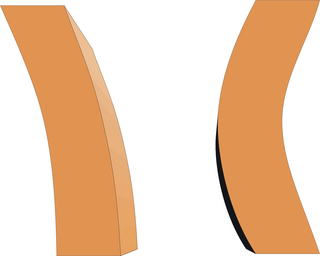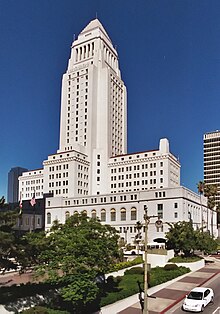
Seismic retrofitting is the modification of existing structures to make them more resistant to seismic activity, ground motion, or soil failure due to earthquakes. With better understanding of seismic demand on structures and with recent experiences with large earthquakes near urban centers, the need of seismic retrofitting is well acknowledged. Prior to the introduction of modern seismic codes in the late 1960s for developed countries and late 1970s for many other parts of the world, many structures were designed without adequate detailing and reinforcement for seismic protection. In view of the imminent problem, various research work has been carried out. State-of-the-art technical guidelines for seismic assessment, retrofit and rehabilitation have been published around the world – such as the ASCE-SEI 41 and the New Zealand Society for Earthquake Engineering (NZSEE)'s guidelines. These codes must be regularly updated; the 1994 Northridge earthquake brought to light the brittleness of welded steel frames, for example.

Seismic analysis is a subset of structural analysis and is the calculation of the response of a building structure to earthquakes. It is part of the process of structural design, earthquake engineering or structural assessment and retrofit in regions where earthquakes are prevalent.
Earthquake engineering is an interdisciplinary branch of engineering that designs and analyzes structures, such as buildings and bridges, with earthquakes in mind. Its overall goal is to make such structures more resistant to earthquakes. An earthquake engineer aims to construct structures that will not be damaged in minor shaking and will avoid serious damage or collapse in a major earthquake. A properly engineered structure does not necessarily have to be extremely strong or expensive. It has to be properly designed to withstand the seismic effects while sustaining an acceptable level of damage.
Vibration isolation is the prevention of transmission of vibration from one component of a system to others parts of the same system, as in buildings or mechanical systems. Vibration is undesirable in many domains, primarily engineered systems and habitable spaces, and methods have been developed to prevent the transfer of vibration to such systems. Vibrations propagate via mechanical waves and certain mechanical linkages conduct vibrations more efficiently than others. Passive vibration isolation makes use of materials and mechanical linkages that absorb and damp these mechanical waves. Active vibration isolation involves sensors and actuators that produce disruptive interference that cancels-out incoming vibration.
This is an alphabetical list of articles pertaining specifically to structural engineering. For a broad overview of engineering, please see List of engineering topics. For biographies please see List of engineers.

Pasadena City Hall is the historic city hall of Pasadena, California, United States. Completed in 1927, it combines elements of both Mediterranean Revival and Spanish Colonial Revival style architecture, and is a significant architectural example of the City Beautiful movement of the 1920s.
A magnetorheological damper or magnetorheological shock absorber is a damper filled with magnetorheological fluid, which is controlled by a magnetic field, usually using an electromagnet. This allows the damping characteristics of the shock absorber to be continuously controlled by varying the power of the electromagnet. Fluid viscosity increases within the damper as electromagnet intensity increases. This type of shock absorber has several applications, most notably in semi-active vehicle suspensions which may adapt to road conditions, as they are monitored through sensors in the vehicle, and in prosthetic limbs.

National Center for Research on Earthquake Engineering is an organisation in Da'an District, Taipei, Taiwan.

In earthquake engineering, vibration control is a set of technical means aimed to mitigate seismic impacts in building and non-building structures.
Ground–structure interaction (SSI) consists of the interaction between soil (ground) and a structure built upon it. It is primarily an exchange of mutual stress, whereby the movement of the ground-structure system is influenced by both the type of ground and the type of structure. This is especially applicable to areas of seismic activity. Various combinations of soil and structure can either amplify or diminish movement and subsequent damage. A building on stiff ground rather than deformable ground will tend to suffer greater damage. A second interaction effect, tied to mechanical properties of soil, is the sinking of foundations, worsened by a seismic event. This phenomenon is called soil liquefaction.
An unreinforced masonry building is a type of building where load bearing walls, non-load bearing walls or other structures, such as chimneys, are made of brick, cinderblock, tiles, adobe or other masonry material that is not braced by reinforcing material, such as rebar in a concrete or cinderblock. The term is used in earthquake engineering as a classification of certain structures for earthquake safety purposes, and is subject to minor variation from place to place.

Earthquake-resistant or aseismic structures are designed to protect buildings to some or greater extent from earthquakes. While no structure can be entirely impervious to earthquake damage, the goal of earthquake engineering is to erect structures that fare better during seismic activity than their conventional counterparts. According to building codes, earthquake-resistant structures are intended to withstand the largest earthquake of a certain probability that is likely to occur at their location. This means the loss of life should be minimized by preventing collapse of the buildings for rare earthquakes while the loss of the functionality should be limited for more frequent ones.
A metallic roller bearing is a base isolation device which is intended for protection of various building and non-building structures against potentially damaging lateral impacts of strong earthquakes.

Oakland City Hall is the seat of government for the city of Oakland, California. The current building was completed in 1914, and replaced a prior building that stood on what is now Frank H. Ogawa Plaza. Standing at the height of 320 feet (98 m), it was the first high-rise government building in the United States. At the time it was built, it was also the tallest building west of the Mississippi River. The City Hall is depicted on the city seal of Oakland.
William Henry Robinson was a New Zealand scientist and seismic engineer who invented the lead rubber bearing seismic isolation device. He grew up in West Auckland, New Zealand. He earned a master's degree at the Ardmore School of Engineering, then a PhD in physical metallurgy at the University of Illinois. Robinson was director of the DSIR's Physics and Engineering Laboratory between 1985 and 1991. He continued to invent and develop seismic isolation devices, travel and lecture until his early 70s.
A buckling-restrained brace (BRB) is a structural brace in a building, designed to allow the building to withstand cyclical lateral loadings, typically earthquake-induced loading. It consists of a slender steel core, a concrete casing designed to continuously support the core and prevent buckling under axial compression, and an interface region that prevents undesired interactions between the two. Braced frames that use BRBs – known as buckling-restrained braced frames, or BRBFs – have significant advantages over typical braced frames.

Medhat Haroun was an Egyptian-American expert on earthquake engineering. He wrote more than 300 technical papers and received the Charles Martin Duke Lifeline Earthquake Engineering Award (2006) and the Walter Huber Civil Engineering Research Prize (1992) from the American Society of Civil Engineers.

Michael C. Constantinou is an American structural engineer who is a Samuel P. Capen Professor and State University of New York Distinguished Professor in the Department of Civil, Structural and Environmental Engineering at the University at Buffalo. He also serves an editor of the Journal of Earthquake Engineering and Structural Dynamics
Andrew Stuart Whittaker is an American structural engineer who is currently a SUNY Distinguished Professor in the Department of Civil, Structural and Environmental Engineering at the University at Buffalo, State University of New York.

Dr. Hideki "Kit" Miyamoto is a Japanese American structural engineer known for being the founder-CEO of Miyamoto International, a global structural engineering and disaster risk reduction organization. He is also the chairman of California's Alfred E. Alquist Seismic Safety Commission, which investigates earthquakes and recommends policies for risk reduction.













